
Kiss Me, Kate is a musical written by Bella and Samuel Spewack with music and lyrics by Cole Porter. The story involves the production of a musical version of William Shakespeare's The Taming of the Shrew and the conflict on and off-stage between Fred Graham, the show's director, producer, and star, and his leading lady, his ex-wife Lilli Vanessi. A secondary romance concerns Lois Lane, the actress playing Bianca, and her gambler boyfriend, Bill, who runs afoul of some gangsters. The original production starred Alfred Drake, Patricia Morison, Lisa Kirk and Harold Lang.
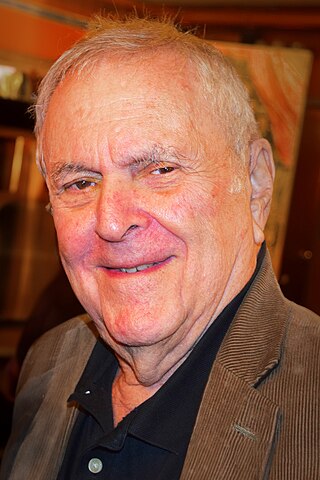
John Harold Kander is an American composer, known largely for his work in the musical theater. As part of the songwriting team Kander and Ebb, Kander wrote the scores for 15 musicals, including Cabaret (1966) and Chicago (1975), both of which were later adapted into acclaimed films. He and Ebb also wrote the standard "New York, New York".

Fred Ebb was an American musical theatre lyricist who had many successful collaborations with composer John Kander. The Kander and Ebb team frequently wrote for such performers as Liza Minnelli and Chita Rivera.

Annie Get Your Gun is a musical with lyrics and music by Irving Berlin and a book by Dorothy Fields and her brother Herbert Fields. The story is a fictionalized version of the life of Annie Oakley (1860–1926), a sharpshooter who starred in Buffalo Bill's Wild West, and her romance with sharpshooter Frank E. Butler (1847–1926).

Charles Strouse is an American composer and lyricist best known for writing the music to such Broadway musicals as Bye Bye Birdie, Applause, and Annie.

The Winter Garden Theatre is a Broadway theatre at 1634 Broadway in the Midtown Manhattan neighborhood of New York City. Originally designed by architect William Albert Swasey, it opened in 1911. The Winter Garden's current design dates to 1922, when it was completely remodeled by Herbert J. Krapp. Due to the size of its auditorium, stage, and backstage facilities, it is favored for large musical productions. It has 1,600 seats and is operated by The Shubert Organization. The auditorium interior is a New York City landmark.
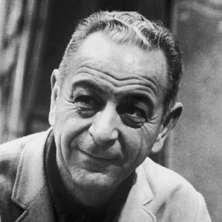
Burton Lane was an American composer and lyricist primarily known for his theatre and film scores. His most popular and successful works include Finian's Rainbow in 1947 and On a Clear Day You Can See Forever in 1965.

The Imperial Theatre is a Broadway theater at 249 West 45th Street in the Theater District of Midtown Manhattan in New York City. Opened in 1923, the Imperial Theatre was designed by Herbert J. Krapp and was constructed for the Shubert brothers. It has 1,457 seats across two levels and is operated by The Shubert Organization. The auditorium interior is a New York City designated landmark.

The Best Little Whorehouse in Texas is a musical with a book by Texas author Larry L. King and Peter Masterson and music and lyrics by Carol Hall. It is based on a story by King that was inspired by the real-life Chicken Ranch in La Grange, Texas.

The Neil Simon Theatre, originally the Alvin Theatre, is a Broadway theater at 250 West 52nd Street in the Theater District of Midtown Manhattan in New York City. Opened in 1927, the theater was designed by Herbert J. Krapp and was built for Alex A. Aarons and Vinton Freedley. The original name was an amalgamation of Aarons's and Freedley's first names; the theater was renamed for playwright Neil Simon in 1983. The Neil Simon has 1,467 seats across two levels and is operated by the Nederlander Organization. Both the facade and the auditorium interior are New York City landmarks.

The August Wilson Theatre is a Broadway theater at 245 West 52nd Street in the Theater District of Midtown Manhattan in New York City. Opened in 1925, the theater was designed by C. Howard Crane and Kenneth Franzheim and was built for the Theatre Guild. It is named for Pulitzer Prize-winning playwright August Wilson (1945–2005). The August Wilson has approximately 1,225 seats across two levels and is operated by Jujamcyn Theaters. The facade is a New York City designated landmark.

The St. James Theatre, originally Erlanger's Theatre, is a Broadway theater at 246 West 44th Street in the Theater District of Midtown Manhattan in New York City. Opened in 1927, it was designed by Warren and Wetmore in a neo-Georgian style and was constructed for A. L. Erlanger. It has 1,709 seats across three levels and is operated by Jujamcyn Theaters. Both the facade and the auditorium interior are New York City landmarks.
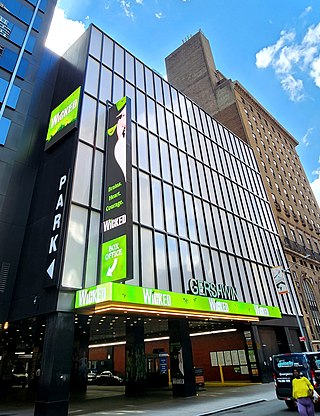
The Gershwin Theatre is a Broadway theater at 222 West 51st Street, on the second floor of the Paramount Plaza office building, in the Midtown Manhattan neighborhood of New York City. Opened in 1972, it is operated by the Nederlander Organization and is named after brothers George and Ira Gershwin, who wrote several Broadway musicals. The Gershwin is Broadway's largest theater, with approximately 1,933 seats across two levels. Over the years, it has hosted musicals, dance companies, and concerts.
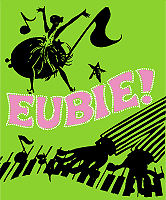
Eubie! Is a revue featuring the music of jazz/swing composer Eubie Blake, with lyrics by Noble Sissle, Andy Razaf, Johnny Brandon, F. E. Miller, and Jim Europe. As with most revues, the show features no book, but instead showcases 23 of Eubie Blake's best songs. The idea of the show was conceived by Julianne Boyd. It opened in 1978, receiving positive reviews from Time, Newsweek, Variety, Backstage, and The Today Show.

The Broadway Theatre is a Broadway theater at 1681 Broadway in the Theater District of Midtown Manhattan in New York City. Opened in 1924, the theater was designed by Eugene De Rosa for Benjamin S. Moss, who originally operated the venue as a movie theater. It has approximately 1,763 seats across two levels and is operated by The Shubert Organization. The Broadway Theatre is one of the few Broadway theaters that is physically on Broadway.

The Music Box Theatre is a Broadway theater at 239 West 45th Street in the Theater District of Midtown Manhattan in New York City. Opened in 1921, the Music Box Theatre was designed by C. Howard Crane in a Palladian-inspired style and was constructed for Irving Berlin and Sam H. Harris. It has 1,025 seats across two levels and is operated by The Shubert Organization. Both the facade and the auditorium interior are New York City landmarks.

The Marquis Theatre is a Broadway theater on the third floor of the New York Marriott Marquis hotel in the Theater District of Midtown Manhattan in New York City. Opened in 1986, it is operated by the Nederlander Organization. There are about 1,612 seats in the auditorium, spread across an orchestra level and a balcony.
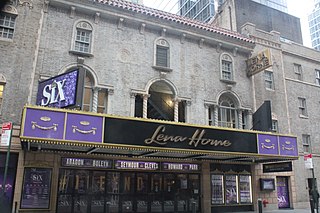
The Lena Horne Theatre is a Broadway theater at 256 West 47th Street in the Theater District of Midtown Manhattan in New York City. Opened in 1926, it was designed by Herbert J. Krapp in a Spanish Revival style and was constructed for Irwin Chanin. It has 1,069 seats across two levels and is operated by the Nederlander Organization. Both the facade and the auditorium interior are New York City landmarks.

The Morosco Theatre was a Broadway theatre near Times Square in New York City from 1917 to 1982. It housed many notable productions and its demolition, along with four adjacent theaters, was controversial.
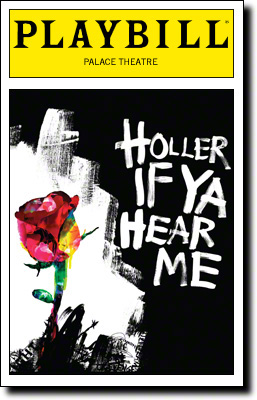
"Holler If Ya Hear Me is a jukebox musical written by Todd Kreidler featuring the rap music of Tupac Shakur.




















